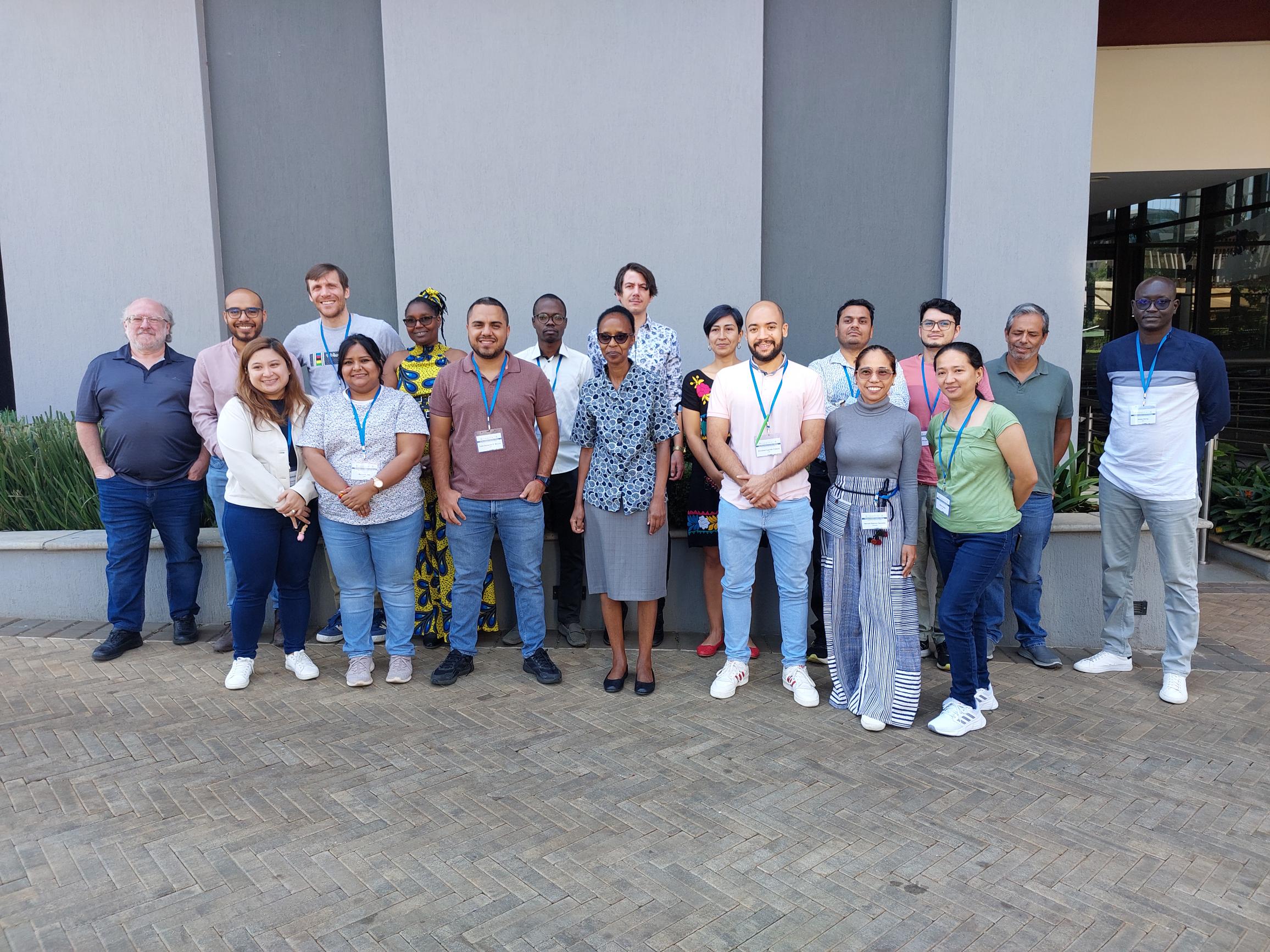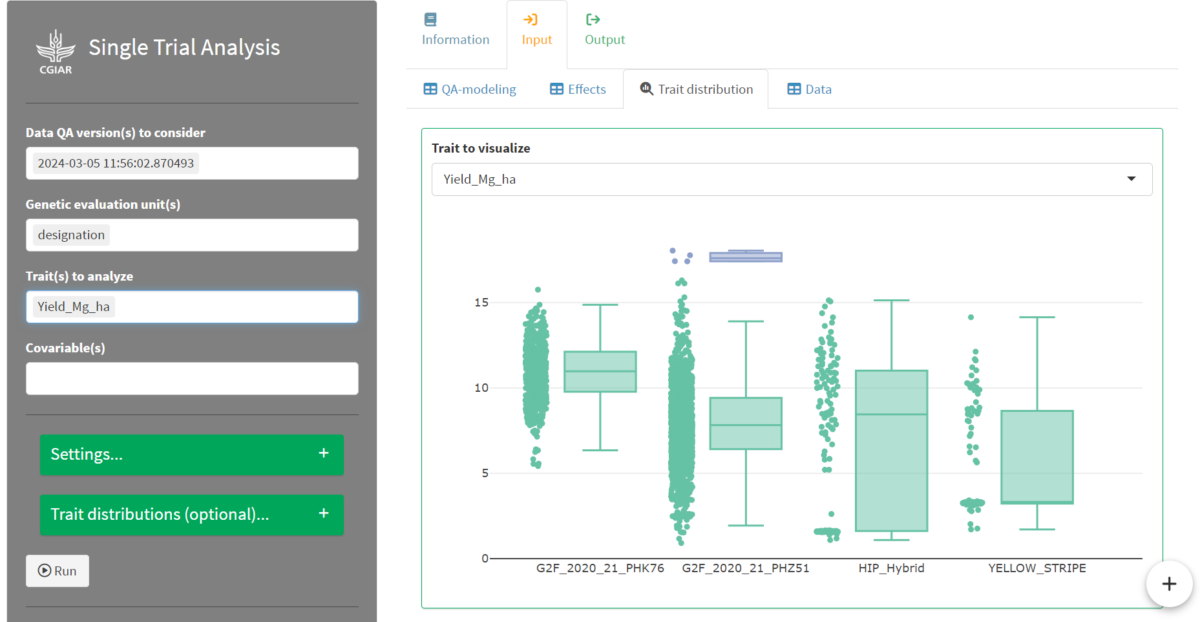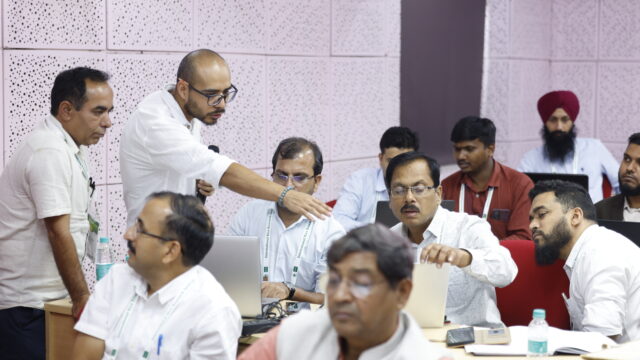
In mid-February, a dedicated gathering of biometricians and quantitative genetics experts from CGIAR’s Centers convened in Nairobi for a week-long hackathon. Their mission? To refine CGIAR’s Breeding Analytics Pipeline, a cutting-edge tool designed to guide decision-making processes in global crop breeding.
With a plethora of algorithms and software available for analyzing crop breeding data, harmonization and automation across CGIAR-NARES breeding programs is crucial for supporting data-driven breeding decision-making, ultimately facilitating the delivery of tomorrow’s crop varieties.
Scheduled for release in the second quarter of 2024, the Breeding Analytics Pipeline will streamline decision-making for breeding operations by extracting data from diverse databases and conducting complex analyses. Comprising a suite of modules, each tailored to a specific type of analysis integral to breeding work – such as estimating genetic gains or employing selection indices -, this tool embodies a collaborative effort to not only enhance operational efficiency but also deliver robust reporting capabilities.
The development of the tool is funded by Crops to End Hunger, a broad multi-funder initiative substantially supported by the Federal Ministry for Economic Cooperation and Development (BMZ), and channelled through the Deutsche Gesellschaft für Internationale Zusammenarbeit (GIZ).
In Kenya, representatives from the International Rice Research Institute (IRRI), AfricaRice, International Institute for Tropical Agriculture (IITA), ICARDA, International Potato Center (CIP), and the Alliance of Biodiversity and CIAT, along with delegates from CIMMYT specializing in maize, wheat, and dryland crops, joined forces with Breeding Resources Initiative, overseeing the technical development of the tool and coordination with all entities, and Accelerated Breeding Initiative, which ensures alignment with CGIAR global crop breeding programs’ needs.
 Single trial analysis preview in the Breeding Analytics pipeline. Photo: Breeding Resources Initiative.
Single trial analysis preview in the Breeding Analytics pipeline. Photo: Breeding Resources Initiative.
Designing a fit-for-purpose analytical pipeline for CGIAR and national partners
In late 2023, Breeding Resources commissioned a fast-track team of biometricians, including Giovanny Covarrubias (IRRI), Ibnou Dieng (IITA) and Khaled Al Shamaa (ICARDA), to spearhead the analytical pipeline, under the endorsement of Genetic Innovation leadership.
During the hackathon, the fast-track team provided a comprehensive briefing to all participants, elucidating the intricacies of the pipeline including the coding structure of the framework. The objective was to empower Centers to contribute modules and pinpoint areas for refinement, before launch but also throughout the life of the pipeline, thereby ensuring the development of the most efficient and user-centred tool.
Ultimately, the pipeline will serve CGIAR breeders across Centers and National Agriculture Research and Extension Systems (NARES), thereby bolstering their often-constrained analytical capabilities.
While most of the tool framework remains crop-agnostic, the hackathon also addressed the necessity for tailored settings for specific crops, particularly polyploid species like sweet potatoes and bananas.
Bananas, for instance, require specific adjustments due to their complex data structure, primarily influenced by harvest time. Unlike crops such as maize or wheat, which are typically harvested at a single point in the year, bananas flower and ripen at varying times, resulting in data more complex data structure.
But the strength of the team present at the hackathon developing the pipeline, lay in its diversity, with Centers’ biometricians offering specialized expertise in statistics and plant breeding across a spectrum of crops. “The collaboration among biometricians and quantitative geneticists with varied specializations allows us to achieve far more collectively than we could individually, ensuring that we address common and specific needs altogether” remarked Bert De Boeck, biometrics lead at CIP and Principal Investigator of the CtEH analytics project.
 Illustration of Quality Assurance for genetic markers in the Breeding Analytics pipeline. Photo: Breeding Resources Initiative.
Illustration of Quality Assurance for genetic markers in the Breeding Analytics pipeline. Photo: Breeding Resources Initiative.
Co-creating to integrate Centers, breeders and breeding programs globally
Recognizing the crucial role of CGIAR Centers’ biometricians in deploying the tool within their respective breeding programs, their active involvement in the hackathon was essential to ensure the Breeding Analytics Pipeline widespread adoption and future use.
The hackathon also served as a communication platform for aligning efforts with the Enterprise Breeding System (EBS), CGIAR’s preferred breeding data management platform, gradually being adopted by all Centers. This alignment ensures coherence and interoperability between the two systems and breeding teams, further bolstering efficiency.
Throughout the intensive week of coding, testing, and feedback sessions, inclusivity and open communication remained focal points. “We strive for consensus and endorsement from all stakeholders,” emphasized De Boeck.
Dorcus Gemenet, Breeding program optimization and Accelerated Breeding’s work package 5 (ACCELERATE) lead, echoed this sentiment; “As representatives of CGIAR-NARES breeders within this project, it’s imperative for us to ensure that the pipeline addresses their specific needs and precise requirements” she emphasized. “This entails aligning on crucial metrics, like calculating genetic gains across breeding programs, which breeders rely on annually. So far, we have been impressed by what has been achieved and the level of collaborative spirit among the co-creators. We are excited to see this tool coming to life.”
As the week ended, discussions pivoted towards interface testing, future expectations, and the pipeline’s role in automating and standardizing reporting for key performance indicators and metrics.
Looking forward, the team envisions hosting the pipeline initially on cloud servers, with provisions for local deployment to accommodate regions with limited internet access. Embracing an open-source model will facilitate widespread adoption and encourage partner contributions.
With the successful conclusion of the hackathon, CGIAR’s Breeding Analytics Pipeline takes a significant stride forward, poised to empower decision-making processes and drive tangible outcomes in plant breeding worldwide.
***
Main image: The team of CGIAR Centers’ biometricians who convened in Nairobi, Kenya, to test and adjust CGIAR’s future Breeding Analytics Pipeline. Credits: CGIAR/Breeding Resources Initiative. “Crops to End Hunger (CtEH)” is a multi-funder initiative that aims to accelerate and modernize the development, delivery and wide-scale use of new crop varieties that are better adapted to climate change and that address gender equity, nutrition, food security and poverty. We extend our heartfelt appreciation to all the generous supporters of this initiative, with special recognition to GIZ. We also express our gratitude to the CGIAR research funders for their invaluable contributions to the CGIAR Trust Fund.



